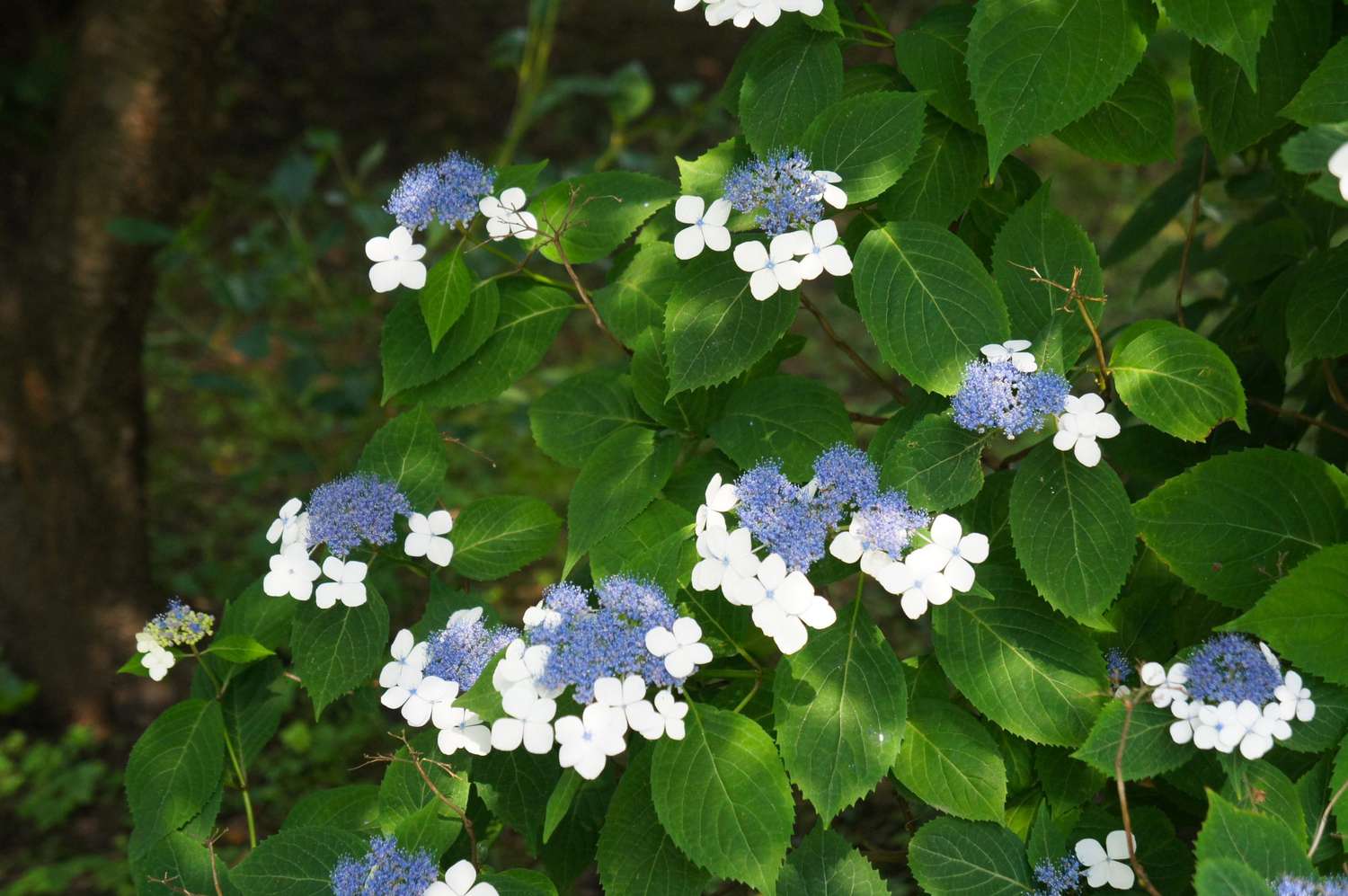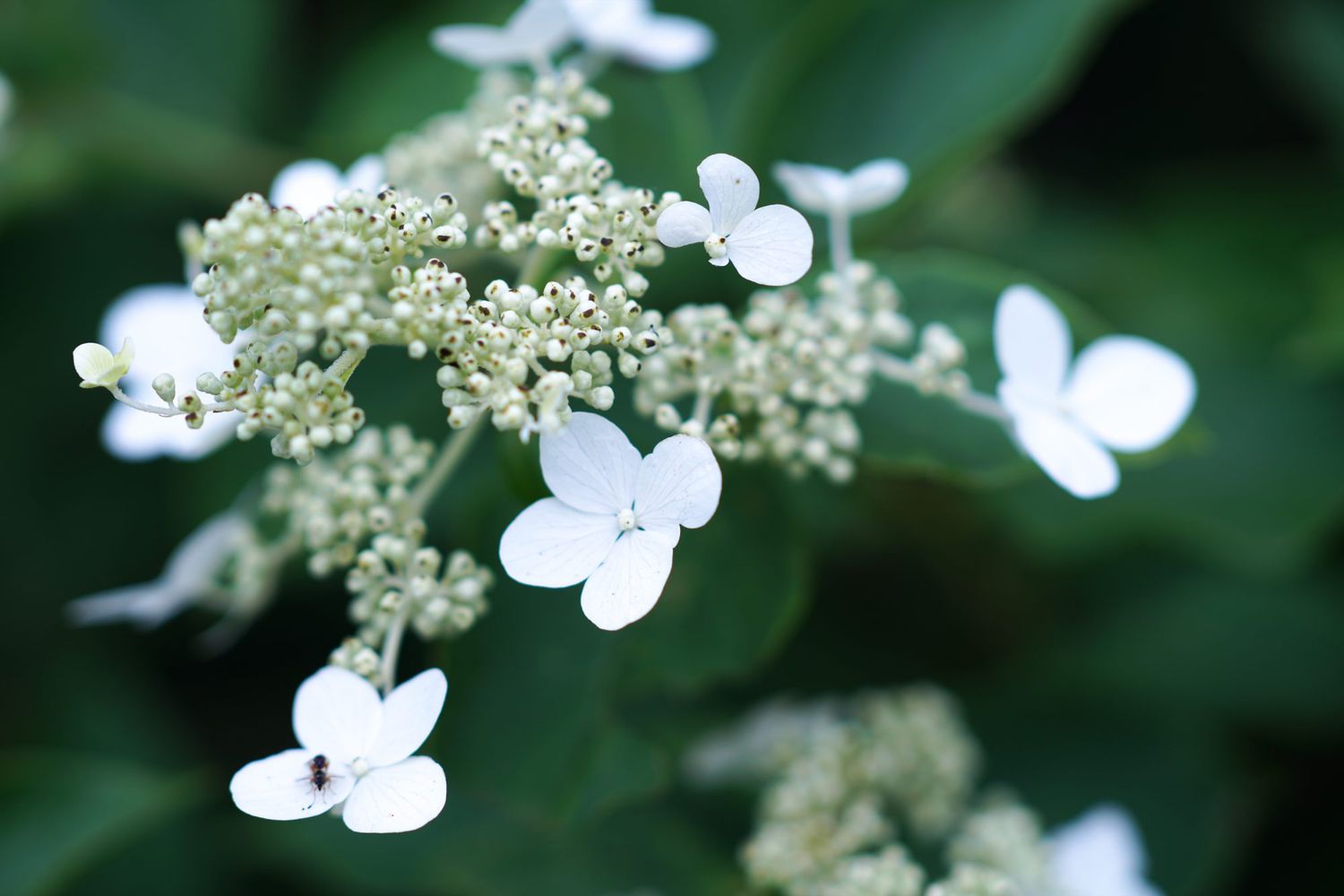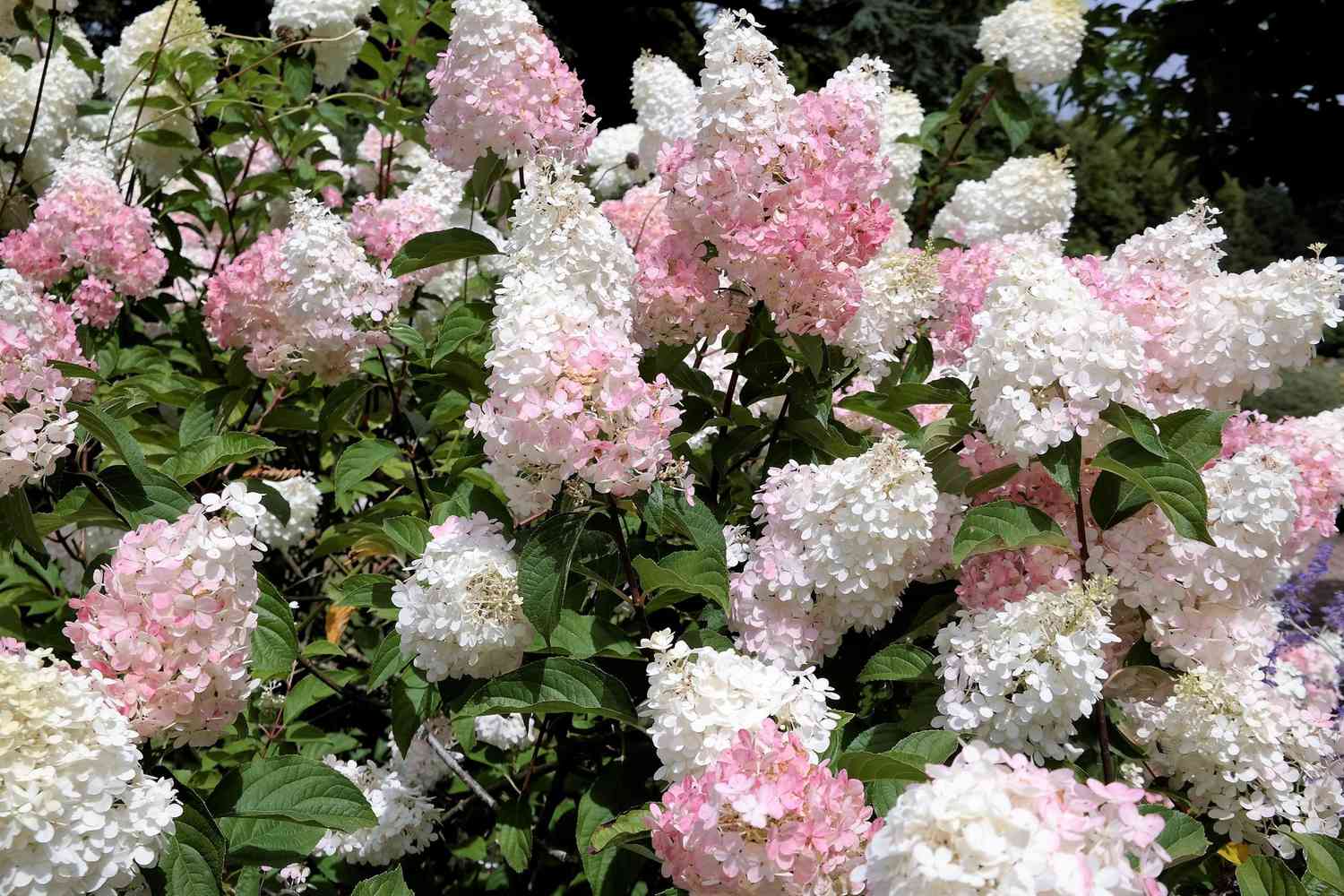It’s just not a Southern garden without a hydrangea or two. Members of the family Hydrangeaceae, these many hydrangea species and selections produce a variety of attractive blooms and foliage, characteristics that reliably make them the MVPs of the garden. Their calling cards are undeniably their big clusters of flowers, which appear in late spring or early summer, last a long time, and come in varying hues of blue, purple, white, pink, and red. (Have you seen the vibrant vanilla strawberry hydrangea?) A few species will change the color of their blooms depending on the pH of the soil; those include bigleaf hydrangea (H. macrophylla), hydrangea aspera (H.aspera), and mountain hydrangea (H. serrata). Learn more about these color-changing shrubs as well as the rest of the hydrangeas that thrive in Southern gardens. While there are plenty of other hydrangeas to try your green thumb at growing, these take most readily to our climes. There are countless reasons that Southern-favorite hydrangeas are ubiquitous in the garden, so read on to find out why. (P.S. They’re also great in containers.)
Bigleaf Hydrangea
Hydrangea macrophylla
Also known as French hydrangea, this shrub is one of the most popular of all the types and can be found across the Southern states. It blooms in late spring or early summer, usually in May or June. It grows in a rounded shrub shape, and it has big, shiny leaves (hence the name «bigleaf») to accompany its globular blooms. While most hydrangeas can tolerate some drought, bigleaf is a little less hardy and needs regular water, especially in the heat of summer. The blooms of H. macrophylla can change color depending on the pH of the soil.
Popular named selections: «All Summer Beauty,» «Ami Pasquier,» «Ayesha,» «Big Daddy,» «Blue Wave,» «Blushing Bride,» «Buttons «n Bows,» «Dear Delores,» «Domotoi,» «Dooley,» «Endless Summer,» «Fuji Waterfall,» «Glowing Embers,» «L.A. Dreamin»,» «Lanarth White,» «Lemon Wave,» «Mini Penny,» «Nikko Blue,» «Penny Mac,» «Pia,» «Twist-n-Shout,» «Variegata»
Learn how to grow hydrangea macrophylla.
Climbing Hydrangea

Hydrangea anomala petiolaris
While the hydrangeas you likely know and love best are blooming shrubs like bigleaf and panicle, this hydrangea type takes the form of a deciduous vine. Climbing hydrangea produces striking blooms—white lace-cap flowers that bloom in late spring and summer—as well as eye-catching foliage which turns yellow in autumn. This vine is an aggressive climber and can reach heights of 60 feet or more as long it has a sturdy support system to cling to.
Learn how to grow climbing hydrangea.
Hydrangea aspera

Native to Eastern Asia, this hydrangea can grow to heights of 12-feet tall and wide in the right conditions. It produces dark-green leaves and wide, flat clusters of purplish-white and pink fertile blooms surrounded by varying shades of sterile flowers. The leaves of H. a. sargentiana are broad and hairy and accompany purple and pink flowers, while H. villosa has blue, purple, and pink blooms. H. aspera is one of the three hydrangea types that will change bloom color depending on the pH of the soil.
Including: H. a. sargentiana, Villosa group (H. villosa)
Hydrangea integrifolia

This hydrangea species is an evergreen vine. It’s native to Southeast Asia and can grow far and wide—up to 25 to 30 feet thanks to the strength of its rootlets, which cling to the surfaces it comes into contact with. H. integrifolia grows best when it has a sturdy support to cling to. Its glossy, dark-green leaves, which emerge with a bronzy tone, are elongated and drooping. Its lacecap flowers are small and white, and they emerge from the vine’s hairy, reddish stems.
Mountain Hydrangea

Hydrangea serrata
This type of hydrangea is a bigleaf look-alike that comes in an array of appearances. It’s home to a variety of selections, each of which has distinct characteristics. Some are small and produce blue-hued blooms, like «Blue Billow,» others produce pink lace-caps, like «Purple Tiers» and «Woodlander.» Still more, like «Preziosa,» produce cream blooms that age to more vibrant colors, including reds and blues. The blooms of most selections and cultivars of H. serrata can change color depending on the pH of the soil in which they are planted (acid = blue, alkaline = pink).
Popular named selections: «Akishino-temari,» «Beni-gaku,» «Blue Billow,» «Bluebird,» «Blue Deckle,» «Grayswood,» «Kurohime,» «Pretty Maiden,» «Preziosa,» «Purple Tiers,» «Woodlander»
Learn when to prune mountain hydrangea.
Oakleaf Hydrangea

Hydrangea quercifolia
This hydrangea is also native to North America. It produces white and pink blooms alongside big leaves, the shapes of which resemble the leaves of oak trees. That’s where it gets its common name. It can reach heights and widths of 6 to 8 feet in optimal conditions, including full sun/partial shade, and substantial water in well-drained soil, amended with plenty of organic matter.
Popular named selections: «Alice,» «Harmony,» «Jetstream,» «Pee Wee,» «Semmes Beauty,» «Snowflake,» «Snow Queen»
Panicle Hydrangea

Hydrangea paniculata
This hydrangea can do double duty in the garden. It’s a deciduous shrub that can grow big, bushy, and tall. It can even be trained into the form of a small tree. This popular planting has many much-loved selections, including «Grandifora,» or peegee hydrangea, which is often grown upright as a tree. The flowers of peegee hydrangea bloom white and fade to pink as they age.
Popular named selections: «Grandiflora,» «Limelight,» «Little Lime,» «Kyushu,» «Pink Diamond,» «Pinky-Winky,» «Tardiva,» «White Diamonds»
Learn how to grow panicle hydrangea.
Smooth Hydrangea

Hydrangea arborescens
This type of hydrangea is native to North America, including Southern states from Florida to Louisiana. Its big flowers are its calling cards, and they appear in a variety of colors, including pink, white, and green. Selections like «Annabelle» are stunning and produce huge flower clusters. This hydrangea is tolerant of cold temperatures, and it’s one of the easiest hydrangeas to grow, needing only partial shade and regular water to thrive.
Popular named selections: «Annabelle,» «Bella Anna,» «Grandiflora,» «Incrediball,» «White Dome»